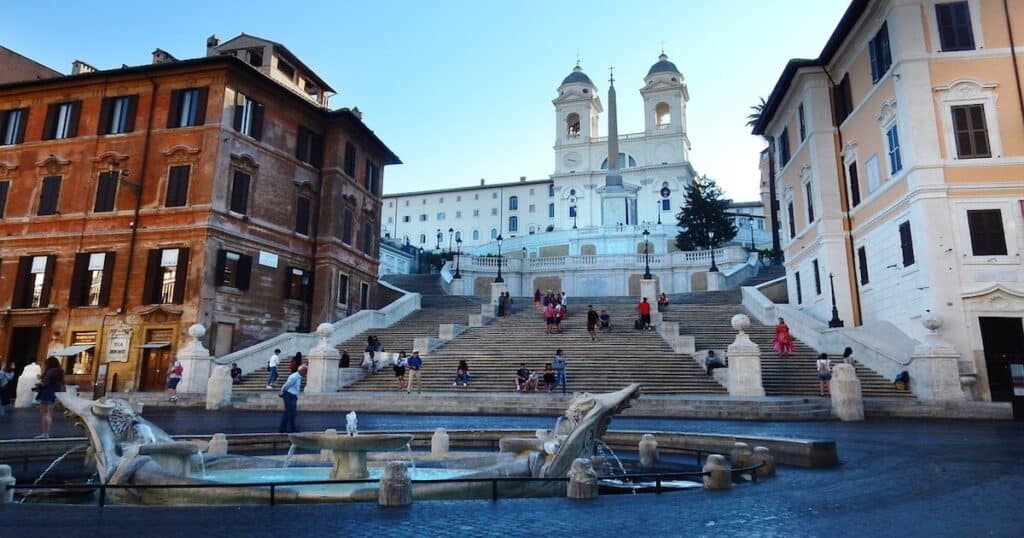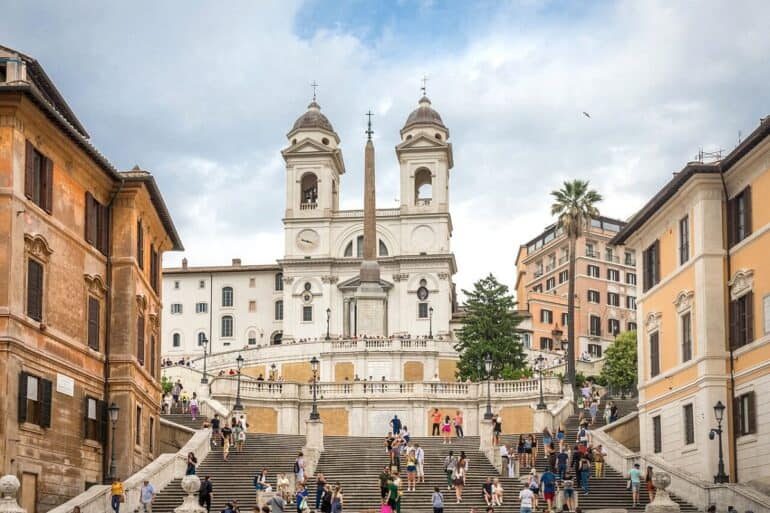Climbing the Spanish Steps: Europe’s largest staircase
Among the most iconic of Rome’s innumerable landmarks, the Spanish Steps are a testament to the power and longevity of Renaissance-era Baroque architecture, in the center of the Eternal City.
Considered the longest and widest staircase in Europe, the 135 steps, formally known as the “Scalinata della Trinità dei Monti” or the “Scalinata di Piazza di Spagna“, ascends a slope of 29 meters, from the Piazza di Spagna at its base to the Trinità dei Monti church at its peak.
It has gained an iconic status due to its near-central position in Rome, and its presence in numerous movies set in Rome, including Roman Holiday (1953) and The Talented Mr. Ripley (1999).
How old are the Spanish Steps?
Construction of the steps took place between 1723 and 1725. Plans for staircase along the slope had been in discussion for decades, but only came into real fruition after the late French diplomat to the Holy See, Étienne Gueffier, bequeathed his fortune to the project in 1660.
The project stagnated for several years, first due to the death of the Pope in 1667, then when Gueffier’s nephew contested his late uncle’s will, so that it did not begin until 1717, when a contest was held to find a design for the Steps. Its been repaired and restored several times since, most recently in 2015-2016.
Who built the Spanish Steps?
The Steps were designed by Francesco de Sanctis. History has recorded precious little about the Late Baroque architect despite the Steps’ significance, so much so that the design is sometimes misattributed to a different man, Alessandro Specchi.
They were built to connect the urban sprawl below to the then newly-finished Trinità dei Monti, which was built at the behest of King Louis XII of France. The French influence can be seen in the steps’ use of Bourbon fleur-de-lys iconography.

Why are they called the ‘Spanish’ Steps?
The Spanish Steps are so-called not because of its builders, who were Italian, nor its sponsors, who were French. Instead, it gets its name from the Spanish Embassy that was moved to the square at its base in the 17th-century. The square thus became the Piazza de Spagna, and the stairs became the Spanish Steps.
What can I do at the Spanish Steps?
The Steps’ centralized position within Rome makes it an ideal stop on any sightseeing tour, guided or otherwise. Piazza de Spagna is full of numerous shops and restaurants, and is home to the Fontana della Barcaccia, considered one of the most beautiful Baroque fountains in Rome.
Can I sit on the Spanish Steps?
Unfortunately, no. To prevent damage to the historical steps from unruly visitors, the Rome city administration has implemented multiple ordinances over the years to prevent excessive loitering. While enforcement of said ordinances have been loose over the years, in 2019 the city implemented fines of up to 400 euros for sitting on or damaging the steps. This hasn’t stopped some locals or visitors from trying to turn the monument into a late-night hangout hub, but it’s best to be safe than sorry.
How much does it cost to visit the Spanish Steps?
Nothing! The Steps are a piece of civic architecture and thus, open to the public at all hours.
How do I get to the Spanish Steps?
The Steps are within a short walking distance of the Spagna metro station, along Metro Line A.






